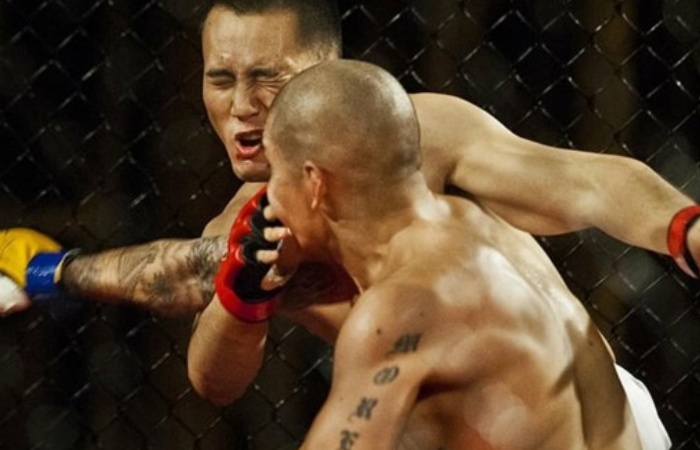Training Martial Arts
Millions of people train in martial arts and combat sports, including karate, Thai boxing, boxing, and Brazilian jiu-jitsu. We’ve seen a recent spike in the number of people using martial arts as a reliable way to get in shape and stay healthy, with the sport more accessible today than ever. From new white belts to the master black belts, martial arts enthusiasts are finding new ways to enjoy their hobby.
Training at a fight gym is the most popular option for those eager to learn martial arts, but it’s no longer the only entry. Since the pandemic, we’re seeing more people train at home or in public places following online tutorials and guides. These are available on qualified coaches’ smartphone apps or live streams. Remote training regimes are tailored to the individual, ensuring the best learning experience.
It’s a fantastic way to try something new, especially if you’re reluctant to walk into a class or the times don’t suit you. But what are the benefits of training in combat sports, and which dangers should you be mindful of when starting? The risks are evident if you’ve watched MMA on TV and gambled on the outcome at sportsbooks in Texas and other major states.
Table of Contents
Martial arts could enrich your life
Many fights descend into a bloodbath, with both fighters leaving the octagon with serious injuries. But that’s not what this article is about. We discuss how learning martial arts could enrich your life and teach a lifelong valuable lesson. You’ll discover the main benefits, what to expect from training at a gym or remotely, and the potential pitfalls when starting your journey into martial arts.
When deciding to train in martial arts, your first decision should be how you wish to train. Would you be best suited to training at a fight gym, attending combat classes, and learning from a teacher alongside fellow newbie students? You may be reluctant to walk into a combat sports gym or too shy and anxious to learn in those surroundings. That’s perfectly normal, and you’re not alone.
Many people learn martial arts through smartphone apps, just as they did through books in the past. A hybrid option of gym and home learning may suit you the best. Learn the basics at a gym, training alongside and learning from your classmates while helping them improve.
If you can’t make a class due to work commitments, that’s when the app comes in handy. Improve the finer details of a move at home, in the garden, or in a quiet corner of a public park.
Build confidence
Martial arts is a great way to build confidence. Like when learning any new discipline, you’ll set yourself a target and work hard to reach your goals. Success breeds confidence, and you will be pleasantly surprised by your performance. Set small, short-term goals when you start training, and watch your confidence grow as you pass the various hurdles.
As your confidence grows alongside your understanding of martial arts, you can make those goals more challenging. Stay in your lane to avoid the risk of injury by over-stretching yourself. Continue to learn and improve at your rate, and that new-found confidence will shine through in everything you do, not just inside the gym.

Learn self-defense
The most obvious advantage of learning a martial art is it improves your self-defense. We all wonder what we’d be like in a fight, but it’s something most will never find out about themselves, and they’ll be delighted with that.
But certain people enjoy pushing themselves. They’ll swim that extra length, do that extra rep, and run that extra mile. Putting themself in a combat situation within the controlled environment of a martial arts gym is the safest and best way to take on a fresh test.
Ideally, you’ll never need your self-defense skills in day-to-day life, but it’s better to know martial arts and not need to use them than not learn martial arts when it would come in useful.
Improve discipline
As anyone experienced in martial arts and combat sports like boxing and Thai boxing already knows, it delivers quiet confidence. Knowing you could handle a situation with your skills but choosing not to is the kind of discipline taught. But there’s more to it than avoiding violence if you’re involved in a confrontation. Discipline comes from doing what you think is tough but doing it like you’re having fun.
Many of our readers love going to the gym and enjoying the buzz of working out. We all have great days at work or home when we’re eager to get to the gym and put in considerable effort. But there are also times when making it to the gym or even training at home feels like a slog. When you lack motivation and suffer from a low mood, getting to the gym is discipline.
You know training will lift your mood; the hard part is getting off the sofa and walking through the gym doors to begin a workout. Showing discipline to your craft when everything in your body urges you to relax at home sets you apart from the crowd.
Commitment
Committing to a training regime brings many benefits, including increased confidence, a healthier body, and a sharper mind. Commitment is a word many people struggle to spell but even more struggle to understand. But it’s an important trait learned in martial arts you can use daily.
Being committed will see you surpass many competitors in many cases and most walks of life. But how do you learn to be dedicated to martial arts? It’s easy. Turn up and keep turning up, regardless of your mood and feelings. Commitment comes by concentrating on being present.
Injuries
You may get injured doing martial arts. We’ve heard horror stories about people breaking legs or dislocating joints training martial arts. But that’s often blamed on poor training methods or inexperienced people getting ahead of themselves.
We’ve seen boxers with flat noses and MMA fighters with cauliflower ears. But we’ve also seen football players with horrific injuries related to their sport. No sport is entirely safe, but the chances of sustaining injury decrease when practiced professionally with a dedicated coaching staff.

